Posted on March 4th, 2020 by Mary Lord
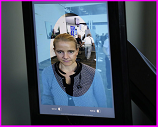 High school students analyze an assortment of popular inventions to determine their intended beneficiaries as well as who has access to, might be harmed by, and is profiting from them. They then develop and apply class standards for ethical design to re-imagine the devices in a way that would do more good for humanity.
High school students analyze an assortment of popular inventions to determine their intended beneficiaries as well as who has access to, might be harmed by, and is profiting from them. They then develop and apply class standards for ethical design to re-imagine the devices in a way that would do more good for humanity.
U.S. Customs and Border Protection photo of VeriScan facial recognition tablet at Dulles International airport by Glenn Fawcett
Read More
Filed under: Class Activities, Grades 9-12, Grades 9-12, Lesson Plans | Comments Off on Engineering Ethics: Evaluating Popular Inventions
Tags: Class Activities, design constraints, Drones, engineering ethics, genetic engineering, Grades 9-12, Lesson Plan, National Society of Professional Engineers, Presentations
Posted on February 6th, 2020 by Mary Lord
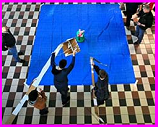 A classic engineering challenge involves designing and building devices that can deliver necessary goods to “Toxic Island,” an island that has been quarantined by the World Health Organization due to a nasty outbreak of disease. Working within specific constraints, including limited materials, middle school students follow the engineering design process to design, test, and improve a device that can deliver “medicine” and other vital supplies accurately and quickly without touching either the water or island.
A classic engineering challenge involves designing and building devices that can deliver necessary goods to “Toxic Island,” an island that has been quarantined by the World Health Organization due to a nasty outbreak of disease. Working within specific constraints, including limited materials, middle school students follow the engineering design process to design, test, and improve a device that can deliver “medicine” and other vital supplies accurately and quickly without touching either the water or island.
Read More
Filed under: Class Activities, Grades 9-12, Grades 9-12, Lesson Plans | Comments Off on Toxic Island: Design Devices to Deliver Goods
Tags: Biomedical Engineering, Class Activities, commerce, delivery, Design, engineering design challenge, Engineering Design Process, Grades 9-12, Lesson Plan, maker challenges, pandemic, public health
Posted on December 17th, 2019 by Mary Lord
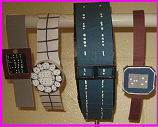 Students in grades 6 to 8 follow the engineering design process while combining mechanical engineering and bioengineering to create a new wristwatch face for a visually impaired student at their school. Teams present their designs to the class and construct prototypes of a watch face that doesn’t rely on sight to tell time.
Students in grades 6 to 8 follow the engineering design process while combining mechanical engineering and bioengineering to create a new wristwatch face for a visually impaired student at their school. Teams present their designs to the class and construct prototypes of a watch face that doesn’t rely on sight to tell time.
Read More
Filed under: Class Activities, Grades 6-8, Grades 6-8, Lesson Plans | Comments Off on Wristwatch Design for the Visually Impaired
Tags: accessibility, assistive devices, bioengineering, Class Activities, Engineering Design Process, Grades 6-8, Human-centered design, Lesson Plans, Mechanical engineering, NGSS aligned activity, teachengineering, visually impaired students, wristwatch
Posted on December 17th, 2019 by Mary Lord
 High school students practice human-centered design by imagining, designing, and prototyping a product to improve classroom accessibility for the visually impaired. The begin by wearing low-vision simulation goggles (or blindfolds) and walking with canes to navigate through a classroom in order to experience what it feels like to be visually impaired.
High school students practice human-centered design by imagining, designing, and prototyping a product to improve classroom accessibility for the visually impaired. The begin by wearing low-vision simulation goggles (or blindfolds) and walking with canes to navigate through a classroom in order to experience what it feels like to be visually impaired.
Read More
Filed under: Class Activities, Grades 9-12, Grades 9-12, Lesson Plans | Comments Off on Redesigning a Classroom for the Visually Impaired
Tags: accessibility, Class Activities, Engineering Design Process, Grades 9-12, Human-centered design, sight-impaired
Posted on December 9th, 2019 by Mary Lord
 Students in grades 6 to 11 explore the practical, scientific, ethical, and environmental issues that emerge in creating “smart” buildings that meld environmentally responsible design with cutting-edge computing technology known as the Internet of Things (IoT). Working in teams, they design and perhaps later implement smart-building solutions to make their school a better place to inhabit.
Students in grades 6 to 11 explore the practical, scientific, ethical, and environmental issues that emerge in creating “smart” buildings that meld environmentally responsible design with cutting-edge computing technology known as the Internet of Things (IoT). Working in teams, they design and perhaps later implement smart-building solutions to make their school a better place to inhabit.
Read More
Filed under: Class Activities, Grades 6-8, Grades 9-12, Lesson Plans | Comments Off on Smart School Building
Tags: careers, civil and environmental engineering, cool, electrical and computer engineering, environment, heat, IEEE, intelligent infrastructure, Internet of Things, LED, light, NGSS, sensors, smart buildings, teachengineering, TryComputing
Posted on November 11th, 2019 by Mary Lord
 Whether its protecting their safety, spotting scams, or taking an online course, all students can benefit from “digital citizenship” skills. San Francisco-based nonprofit Common Sense has,teamed up with Harvard’s Graduate School of Education to create a free curriculum for kindergarten through high school.
Whether its protecting their safety, spotting scams, or taking an online course, all students can benefit from “digital citizenship” skills. San Francisco-based nonprofit Common Sense has,teamed up with Harvard’s Graduate School of Education to create a free curriculum for kindergarten through high school.
Read More
Filed under: K-12 Education News, Lesson Plans, Special Features, Web Resources | Comments Off on Digital Literacy & Citizenship Lessons
Tags: cyberbullying, cybersaftety, digital citizenship, Harvard Graduate School of Education, Internet Resources, Lesson Plans, online civics, Project Zero, Resources for Teachers, Web Resources
Posted on October 21st, 2019 by ASEE
 This simple catapult activity for students in grades 4 – 8 teaches them how energy is transferred when a plastic spoon is pulled back, then released, rocketing its payload — a single marshmallow.
This simple catapult activity for students in grades 4 – 8 teaches them how energy is transferred when a plastic spoon is pulled back, then released, rocketing its payload — a single marshmallow.
Read More
Filed under: Class Activities, Grades 6-8, Grades K-5, Grades K-5, Lesson Plans | Comments Off on Activity: Catapult Marshmallow Launch
Tags: catapult, Class Activities, Energy, forces and motion, Fun & Games, Grades 4 - 8, Grades K-5, Newton's Laws, NGSS, Physical Science, Physics, trebuchet
Posted on September 26th, 2019 by Mary Lord
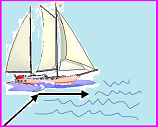 Middle school students learn the concept of dead reckoning by using vectors to plot a course based on a time and speed, then correct their positions with vectors representing winds and currents. Includes a link to related activities on navigation and creating nautical charts.
Middle school students learn the concept of dead reckoning by using vectors to plot a course based on a time and speed, then correct their positions with vectors representing winds and currents. Includes a link to related activities on navigation and creating nautical charts.
Read More
Filed under: Class Activities, Grades 6-8, Lesson Plans | Comments Off on Vector Voyage!
Tags: Aerospace Engineering, Class Activities, Geography, GPS, Grades 6-8, Lesson Plan, Mathematics, nautical charts, naval engineering, navigation, Physics, teachengineering, vectors
Posted on September 23rd, 2019 by ASEE
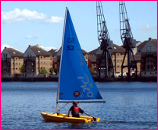 In this lesson, students in grades 2 – 7 use simple materials to design and make model sailboats that must stay upright and sail straight in a testing tank. They will learn the basic components of a ship and how design represents a tradeoff between speed, stability, and ease of handling.
In this lesson, students in grades 2 – 7 use simple materials to design and make model sailboats that must stay upright and sail straight in a testing tank. They will learn the basic components of a ship and how design represents a tradeoff between speed, stability, and ease of handling.
Read More
Filed under: Class Activities, Grades 6-8, Grades 6-8, Grades K-5, Grades K-5, Lesson Plans | 1 Comment »
Tags: buoyancy, Class Activities, Lesson Plan, Ocean, sailboat, wind power
 High school students analyze an assortment of popular inventions to determine their intended beneficiaries as well as who has access to, might be harmed by, and is profiting from them. They then develop and apply class standards for ethical design to re-imagine the devices in a way that would do more good for humanity.
High school students analyze an assortment of popular inventions to determine their intended beneficiaries as well as who has access to, might be harmed by, and is profiting from them. They then develop and apply class standards for ethical design to re-imagine the devices in a way that would do more good for humanity.








 A classic engineering challenge involves designing and building devices that can deliver necessary goods to “Toxic Island,” an island that has been quarantined by the World Health Organization due to a nasty outbreak of disease. Working within specific constraints, including limited materials, middle school students follow the engineering design process to design, test, and improve a device that can deliver “medicine” and other vital supplies accurately and quickly without touching either the water or island.
A classic engineering challenge involves designing and building devices that can deliver necessary goods to “Toxic Island,” an island that has been quarantined by the World Health Organization due to a nasty outbreak of disease. Working within specific constraints, including limited materials, middle school students follow the engineering design process to design, test, and improve a device that can deliver “medicine” and other vital supplies accurately and quickly without touching either the water or island. Students in grades 6 to 8 follow the engineering design process while combining mechanical engineering and bioengineering to create a new wristwatch face for a visually impaired student at their school. Teams present their designs to the class and construct prototypes of a watch face that doesn’t rely on sight to tell time.
Students in grades 6 to 8 follow the engineering design process while combining mechanical engineering and bioengineering to create a new wristwatch face for a visually impaired student at their school. Teams present their designs to the class and construct prototypes of a watch face that doesn’t rely on sight to tell time. High school students practice human-centered design by imagining, designing, and prototyping a product to improve classroom accessibility for the visually impaired. The begin by wearing low-vision simulation goggles (or blindfolds) and walking with canes to navigate through a classroom in order to experience what it feels like to be visually impaired.
High school students practice human-centered design by imagining, designing, and prototyping a product to improve classroom accessibility for the visually impaired. The begin by wearing low-vision simulation goggles (or blindfolds) and walking with canes to navigate through a classroom in order to experience what it feels like to be visually impaired.  Students in grades 6 to 11 explore the practical, scientific, ethical, and environmental issues that emerge in creating “smart” buildings that meld environmentally responsible design with cutting-edge computing technology known as the Internet of Things (IoT). Working in teams, they design and perhaps later implement smart-building solutions to make their school a better place to inhabit.
Students in grades 6 to 11 explore the practical, scientific, ethical, and environmental issues that emerge in creating “smart” buildings that meld environmentally responsible design with cutting-edge computing technology known as the Internet of Things (IoT). Working in teams, they design and perhaps later implement smart-building solutions to make their school a better place to inhabit. Whether its protecting their safety, spotting scams, or taking an online course, all students can benefit from “digital citizenship” skills. San Francisco-based nonprofit Common Sense has,teamed up with Harvard’s Graduate School of Education to create a free curriculum for kindergarten through high school.
Whether its protecting their safety, spotting scams, or taking an online course, all students can benefit from “digital citizenship” skills. San Francisco-based nonprofit Common Sense has,teamed up with Harvard’s Graduate School of Education to create a free curriculum for kindergarten through high school. This simple catapult activity for students in grades 4 – 8 teaches them how energy is transferred when a plastic spoon is pulled back, then released, rocketing its payload — a single marshmallow.
This simple catapult activity for students in grades 4 – 8 teaches them how energy is transferred when a plastic spoon is pulled back, then released, rocketing its payload — a single marshmallow. Middle school students learn the concept of dead reckoning by using vectors to plot a course based on a time and speed, then correct their positions with vectors representing winds and currents. Includes a link to related activities on navigation and creating nautical charts.
Middle school students learn the concept of dead reckoning by using vectors to plot a course based on a time and speed, then correct their positions with vectors representing winds and currents. Includes a link to related activities on navigation and creating nautical charts. In this lesson, students in grades 2 – 7 use simple materials to design and make model sailboats that must stay upright and sail straight in a testing tank. They will learn the basic components of a ship and how design represents a tradeoff between speed, stability, and ease of handling.
In this lesson, students in grades 2 – 7 use simple materials to design and make model sailboats that must stay upright and sail straight in a testing tank. They will learn the basic components of a ship and how design represents a tradeoff between speed, stability, and ease of handling.